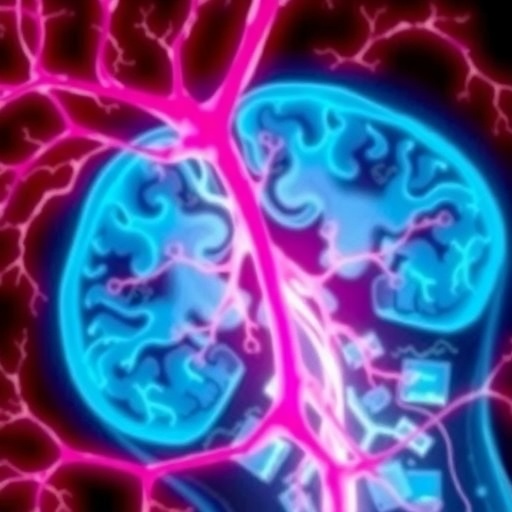American Thoracic Society, Japanese Respiratory Society and Asociación Latinoamericana de Tórax collaborate on new clinical practice guidelines

Credit: ATS
Aug. 3, 2020– More than 30 years after the last guidance on the clinical evaluation of hypersensitivity pneumonitis (HP), the American Thoracic Society – in collaboration with the Asociación Latinoamericana de Tórax or ALAT and the Japanese Respiratory Society- has developed new guidelines for clinicians. The guidelines are available online ahead of print in the American Journal of Respiratory and Critical Care Medicine.
Hypersensitivity pneumonitis manifests as interstitial lung disease. It is difficult to diagnose and until now, there has been little consensus in terms of disease definition, diagnostic criteria and diagnostic approach.
“The clinician is often unable to distinguish features of fibrotic HP (f-HP) from those of idiopathic pulmonary fibrosis (IPF), and some patients meeting the criteria for the diagnosis of IPF may in fact have f-HP with pulmonary fibrosis,” said Ganesh Raghu, MD, professor of medicine, University of Washington and director of the Center for Interstitial Lung Disease at University of Washington Medical center. “The high rate of screen failures in patients participating in IPF clinical trials highlights this diagnostic challenge, as pulmonologists may be misdiagnosing patients with f-HP as having IPF, overlooking environmental factors that can contribute to the disease.”
The guideline committee categorized HP into two clinical phenotypes, namely nonfibrotic and fibrotic HP, and made recommendations for reach. Their priority was to help clinicians make a confident and accurate diagnosis of HP.
The following is a summary of the panel’s recommendations, which were formulated using the Grading of Recommendations, Assessment, Development, and Evaluation approach (GRADE):
Recommendation 1
- For patients with newly identified ILD whose differential diagnosis includes non-fibrotic HP or fibrotic HP, the guideline committee makes no recommendation or suggestion for or against the use of a specific questionnaire to identify potential inciting agents of HP; instead, the guideline committee recommends the development and validation of a questionnaire. Remark: Pending the availability of a validated questionnaire, the guideline committee advocates that clinicians take a thorough history to identify potential exposures and sources in the patient’s environment that are known to be associated with HP.
Recommendation 2
- For patients with newly identified ILD whose differential diagnosis includes non-fibrotic HP, the guideline committee suggests performing serum IgG testing that targets potential antigens associated with HP (suggestion, very low confidence in the estimated effects).
- For patients with newly identified ILD whose differential diagnosis includes fibrotic HP, the guideline committee suggests performing serum IgG testing that targets potential antigens associated with HP (suggestion, very low confidence in the estimated effects).
Recommendation 3
- For patients with newly identified ILD whose differential diagnosis includes non-fibrotic HP, the guideline committee recommends bronchoalveolar lavage with lymphocyte cellular analysis (recommendation, very low confidence in the estimated effects).
- For patients with newly identified ILD whose differential diagnosis includes fibrotic HP, the guideline committee suggests bronchoalveolar lavage with lymphocyte cellular analysis (suggestion, very low confidence in the estimated effects).
Recommendation 4
- For patients with newly identified ILD whose differential diagnosis includes non-fibrotic HP, the guideline committee suggests transbronchial forceps lung biopsy (suggestion, very low confidence in the estimated effects).
- For patients with newly identified ILD whose differential diagnosis includes fibrotic HP, the guideline committee makes no recommendation or suggestion for or against transbronchial forceps lung biopsy.
Recommendation 5
- For patients with newly identified ILD whose differential diagnosis includes non-fibrotic HP, the guideline committee makes no recommendation or suggestion for or against transbronchial cryobiopsy.
- For patients with newly identified ILD whose differential diagnosis includes fibrotic HP, the guideline committee suggests transbronchial cryobiopsy (suggestion, very low confidence in estimated effects).
Recommendation 6
- For patients with newly identified ILD whose differential diagnosis includes non-fibrotic HP, the guideline committee suggests surgical lung biopsy; this recommendation is intended for after alternative diagnostic options have been exhausted (suggestion, very low confidence in estimated effects).
- For patients with newly identified ILD whose differential diagnosis includes fibrotic HP, the guideline committee suggests surgical lung biopsy; this recommendation is intended for after alternative diagnostic options have been exhausted (suggestion, very low confidence in estimated effects).
“These guidelines create a framework that we hope will standardize clinical care and facilitate research,” said Kevin C. Wilson, MD, professor of medicine at Boston University School of Medicine. Dr. Wilson also oversees development of clinical practice guidelines for the ATS.
The ATS has published nearly 20 clinical practice guidelines on various conditions, ranging from allergy and asthma to TB, other pulmonary infections and including IPF, a disease often mistaken for f-HP. For ATS guideline implementation tools and derivatives, go here.
###
About the American Thoracic Society
Founded in 1905, the American Thoracic Society is the world’s leading medical association dedicated to advancing pulmonary, critical care and sleep medicine. The Society’s more than 16,000 members prevent and fight respiratory disease around the globe through research, education, patient care and advocacy. The ATS publishes four journals, the American Journal of Respiratory and Critical Care Medicine, the American Journal of Respiratory Cell and Molecular Biology, the Annals of the American Thoracic Society and ATS Scholar.
About Asociación Latinoamericana de Tórax (ALAT)
ALAT was founded in 1996 with the aim of promoting respiratory health, scientific development and education among pulmonologists of the region. ALAT has more than 10,500 active members that meet and collaborate using primarily Spanish and Portuguese languages. The Association has close relationships with the other large Respiratory Societies from USA, Europe, Asian and Africa. ALAT publishes in collaboration with the Spanish Society of Pulmonology (SEPAR) the Journal “Archivos de Bronconeumología” and more recently, founded RESPIRAR as a virtual journal with Educational purposes publishing reviews, comments and guidelines of different lung disorders.
About the Japanese Respiratory Society
The Japanese Respiratory Society (JRS) was founded in 1961. There are now approximately 12,700 members making it the biggest scientific respiratory society in the Asian-Pacific Region. JRS contributes to the promotion of respiratory health and welfare by engaging innovative science, culture, education, and clinical research in the field of respiratory health and diseases. “Respiratory Investigation” is an official journal, published in English. The journal published original manuscripts on clinical investigations of a variety of respiratory diseases and medicines, along with articles concerning basic physiology, pathology, and cellular/molecular biology relating to any pulmonary diseases.
Media Contact
Dacia Morris
[email protected]





